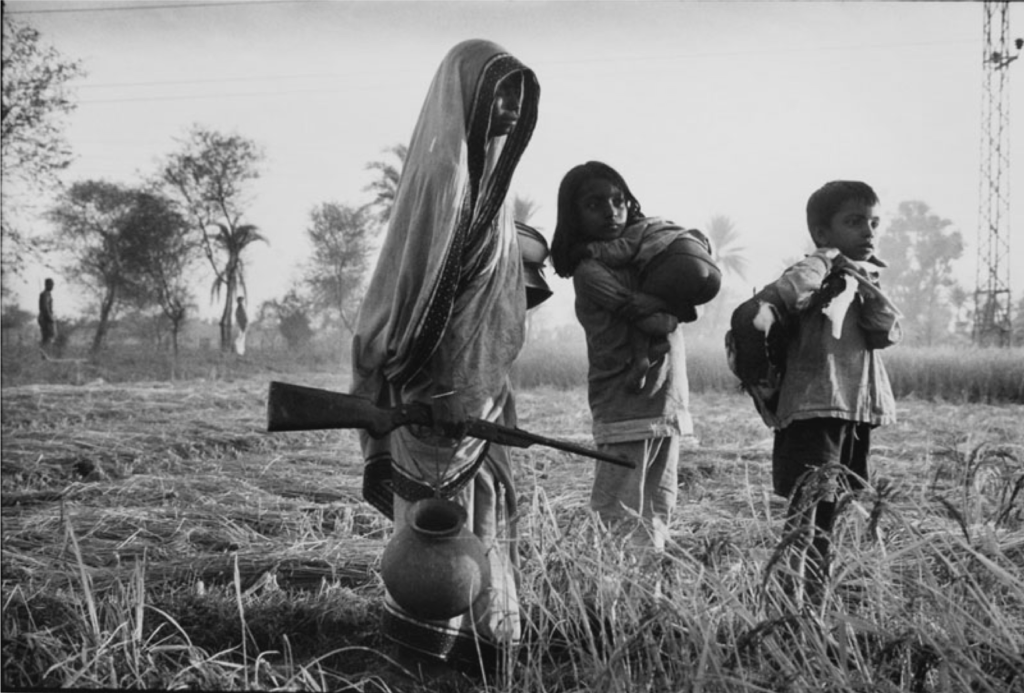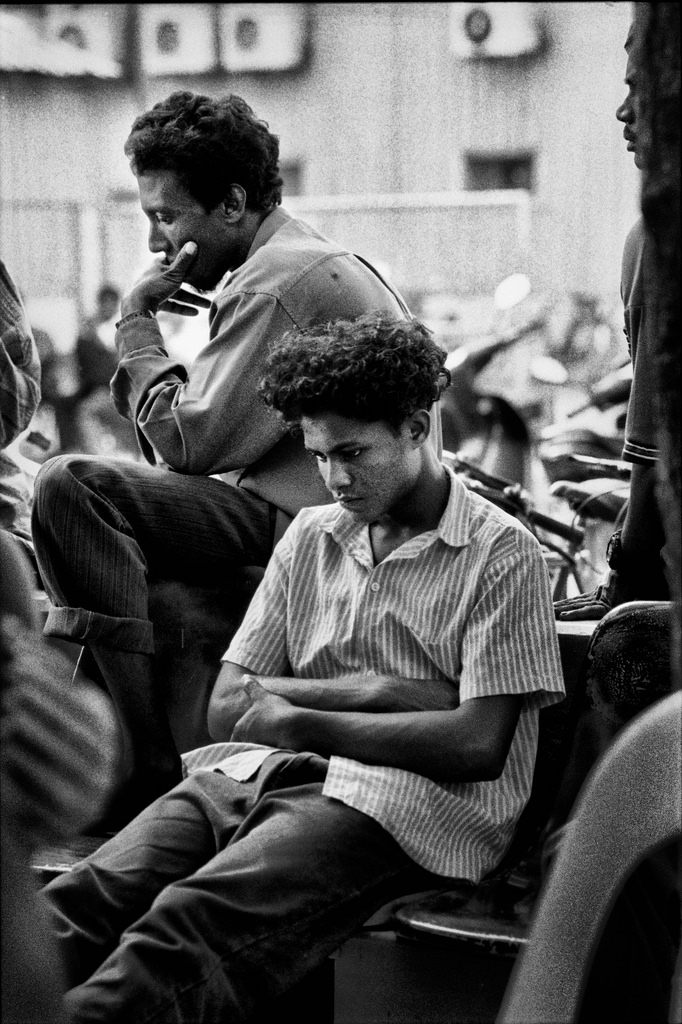Originally published in New Age
By Shahidul Alam
Joy Bangla in those days had not been commandeered by any political party. It was a slogan we all used. Some took it more to heart than others. I was on a rickshaw heading towards mejo chachi’s house, (she is mother of my footballer cousin Kazi Salahuddin, better known by his nickname Turjo). Seeing a friend on the road I shouted out Joy Bangla. Joy Bangla, he waved back. At mejo chachi’s the rickshawala refused to take my fare. “Joy Bangla bolsen na. apnar thon bhara loi kemne” (You said Joy Bangla. How can I take fare from you?). Despite my insistence he wouldn’t budge. The rallying cry belonged to us all. He saw me as a fellow warrior.
On the 16th December, I had gone into a burning military convoy opposite Sakura hotel and took a partially charred Browning light machine gun as a trophy. Almost at the same site where I had seen, nine months ago, people being gunned down as they ran from the flames on the night of the 25th March. They lived in the slums near the Holiday office. Their brutal death part of a statistical count we still argue about.
Years later, I tried to put together a visual chronicle of the war. Collecting photographs from great photographers from far away lands and many local ones who had witnessed our pain, and shared our victory. There were moments of great bravery and greater sacrifice. There were moments of immense pain. The weight of great loss. Rashid Talukder’s image of the dismembered head in Rayerbazar was one of the most striking. Kishor Parekh?s sculpted frames showing, dignity, honour, elation and loss. Raghu Rai?s monumental images of seas of people seeking shelter. Captain Beg’s rare photographs of the mukti bahini during battle. Mohammad Shafi?s striking image of women smuggling grenades in half-submerged baskets. Aftab Ahmed’s image of the final surrender, stoic and significant.

The image that stood out from all the others however, was by Penny Tweedie. Freelancing and without an assignment, Penny had neither the luxury of a client?s budget, nor the assurance of a publishing slot. She did the best she could, getting lifts from fellow photographers, flitting between areas of conflict and stress, she stayed close to ordinary people. People like my rickshawala friend, or the people I saw dying on the night of the 25th March. People who resisted, people who fled, people who sheltered others. People who fed people when they had little food themselves. The image of a woman, carrying a gun walking through a paddy field, with children in tow, was for me the image that encapsulated the war. These were ordinary people who had war thrust upon them. They made do, as best as they could. Bearing their pain with dignity. Fighting with no hope for return. Unlike me, they were not trophy hunters. I doubt if that woman ever made it to a muktijoddha list. I have no way of knowing if she, or her children made it through the war alive. They gave us this nation where we had all hoped we would be free.

Over forty years later, it is still the women in the paddy fields who feed the nation. It is still the garment worker in the dangerous factory who brings in the dollars that our politicians boast about. It is the migrant labourer who risks angry seas and mass graves who sends money back home. The government chided them for finding informal ways to send the money. “Do it through the banks” they said. “Show your patriotism.” They did. Taking turns to sleep on narrow beds. Eating little, working long hours. Suffering humility and sometimes torture, they heeded. They took their hard earned savings and deposited them in the banks. Just as they had been told to.
Their hopes are simple. To finally own a plot of land, to get a sister married, to send children to school. To die in some way, different from the way they were born. They have no way of knowing how much a 100 million dollars is. No way to fathom how many schools it might build. How much life-saving drugs it can buy. How many fishing nets, or ploughs, or bags of fertiliser it may fetch. How many starving mouths it can feed. No knowledge of hacking, or biometric security. They worked long hours, ate little, slept less. They filled long forms, paid bribes to government officials and got themselves a bank account. Apart from the money needed for a phone call home, every cent they earned was sent through the bank. They did as they were told. Unable to feed their families back home, they took hazardous journeys across turbulent seas. Some perished, some were brutalised, some ended up in foreign jails. The prime minister, unconcerned about their safety, worried more about her ‘image’. than their plight, and promised to have them arrested upon return.
I am surprised they haven’t come out on the streets. They haven’t stormed the palace. Neither have we taken to the streets. Not demanded justice. I have no idea what independence meant to my rickshawala friend, or the woman with the gun. But I know the middle class and the wealthy have prospered, and the politicians in power and the bureaucracy that has brought them into power have plundered the nation. No arrests, no resignations of ministers, no apologies.
The farmers, the garment workers, the migrant labourers will continue to toil. Continue to live well below the poverty line, continue to send their children to work as there is not enough to feed the family otherwise. They will continue to send money home. While the privileged few in the tri-state regions of Gulshan, Banani and Baridhara, and the officers in the secretariat, and the lawmakers in parliament, count their dollars in far away banks, my rickshawala friend will be left to ponder why he gave away his hard earned fare, for the chant of Joy Bangla.
Editor’s note: The finance minister under whose watch the 100 million dollar heist took place has since been awarded the ‘Swadhinata Padak 2016′
